Rafael Leonidas Trujillo Molina
General Rafael Trujillo ruled the Dominican Republic as both president and an oppressive tyrant behind the standing presidents from 1930 until his assassination in May 1961. “El Jefe” or “El Benefactor” built much of the modern infrastructure of the country while holding the title of one of the cruelest dictators in the world.
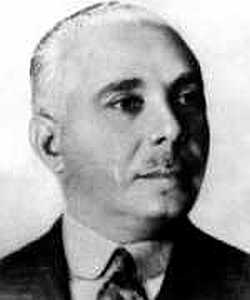
History | “El Benefactor” and “El Jefe” | Controversies & Scandals | Trujillos Murder | Interesting facts | Trujillo: El Poder del Jefe II / The Power of the Chief video | Book of Trujillos Time | More pictures of Trujillo included in the Old Pictures of Dominican Republic slide show (new page)
Rafael Leónidas Trujillo Molina
Born October 24, 1891 – Died May 30, 1961
Rafael Leonidas Trujillo Molina was born October 24, 1891 in the city of San Cristóbal, Dominican Republic. His parents, very poor, were Jose Trujillo Valdez, into retail sales, and Altagracia Julia Molina, was a housewife considered to be a kindhearted and dear woman. His family was of Spanish, Haitian and Dominican descent.
Trujillo was a typical kid and was exceptionally involved in his studies at school. When he was 16 he got a job as a telegrapher (thanks to his Uncle) and worked in offices near Bani and also in Santo Domingo.
The young Trujillo started changing by getting into trouble. He even spent time in jail. Around 1910 he became interested in politics and joined the National Party of Horacio Vasquez. He partook in many protests of the then president, Don Isidro Jiménez and his government.
During the United States occupation (1916-1924), Trujillo enlisted in the National Guard, trained by the United States Marines, to maintain order after the occupation. Quickly rising to a high rank by 1927, Trujillo became Brigadier General and Commander in Chief of the Dominican Republic’s army.
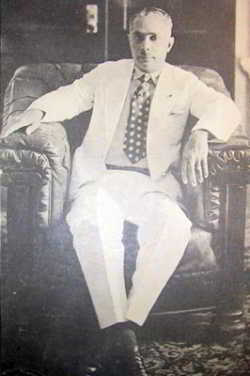
During the Revolution in Santiago in 1930 he and his followers overthrew the government causing the president, Horacio Vásquez, to resign. Since Trujillo was in the military he had to run his takeover concealed from sight so as not to be charged with treason. On May 16, 1930 Trujillo was chosen to be president without opposition.
* During this time in history there are so many conflicting stories about what really happened. Trujillo rewrote so much of his own history that much of the original documentation was lost. How was he elected? Who killed whom? Who was behind the takeover? If you want more in depth information, I urge you to study more on your own; it is way too political and involved for me to cover here.
“El Benefactor” and “El Jefe”
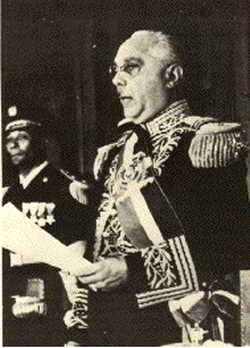
Trujillo organized the Partido Dominicano (Dominican Party) the year after his election to president. This party controlled Dominican politics for the next three decades. During that time Trujillo was an unconditional dictator. He was called “El Benefactor” and “El Jefe”. He was General of the Army and president from 1930 to 1938 and from 1942 to 1952 and foreign minister from 1953 to 1961. The Trujillo era gave economic soundness to the country yet it did not sanction the people’s freedom.
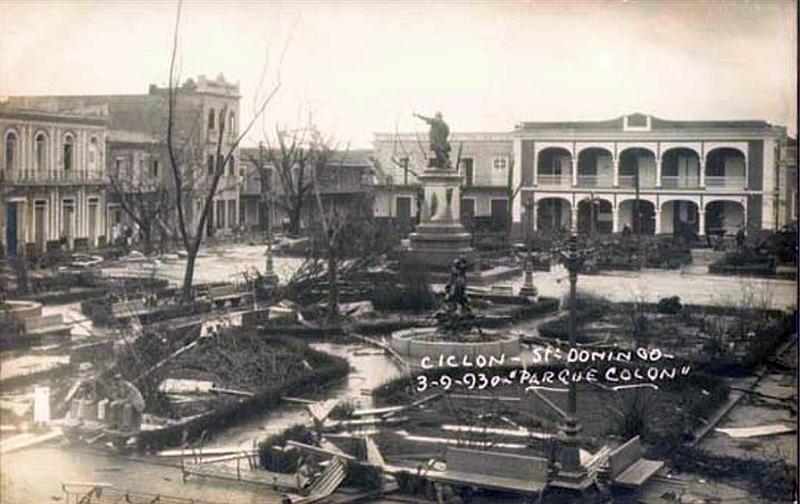
The ravaging hurricane, Ciclon Zenon, destroyed much of Santo Domingo in 1934. Trujillo concocted a rebuilding plan to revamp the city. His new promotional slogan was “el culto al jefe”. He renamed Santo Domingo Ciudad Trujillo (Trujillo City). He also changed the name of the highest mountain of the country, Pico Duarte to Pico Trujillo (Trujillo Peak) after himself. He renamed towns and streets, had statues of himself erected throughout the country and held many celebrations, parades and holidays, all commemorating himself. In 1955 he claimed January 11 to be “The Day of the Benefactor” (“Año del Benefactor de la Patria”), Trujillo used his political control to gain great personal wealth. He received much support from the United States by becoming one of Latin America’s leading anti-Communists.
The way Trujillo presented himself generated indignation. It started conspiracies in many parts of the country by those who did not agree with Trujillo and his policies. To stop this from happening the government formed a strong Military Intelligence Service called Servicio de Inteligencia Militar (SIM) to watch for these people. Once found, they were nabbed and fated to torture or death. In this way, he kept control of his people.
Controversies & Scandals
In October 1937 Trujillo had made agreements with the Haitian president, Stenio Vincent. He stated that he would permit Haitians to cross the border. Then he changed his mind and again wanted control of the border. It was decided that if a person could not pronounce the letter r in “perejil”, the Spanish word for parsley (the R is difficult for Haitians to pronounce), they would be killed. Thus entailed a great slaughter of the Haitians in Dominican Republic.
The number of people massacred during his tyranny was never confirmed. It is said that from 12,000 to 25,000 Haitian men, women and children were annihilated. To make it look like it was not his fault Trujillo jailed some of the people that committed this atrocity, using them as scapegoats. Trujillo paid $750.000 to the Haitian government.
Trujillo began a program, “Dominicanización de la Fronterá” / Dominicanization of the Border. He favored European immigration. He had an open-door policy admitting Jewish immigrants in the 1930s when most countries were turning away the Jewish people. After the Spanish Civil War he promoted the immigration of the exiles. It is said that he did this to “whiten” the population but it has not been proved. Trujillo was of mixed descent and it is said he wore make-up to lighten his skin.
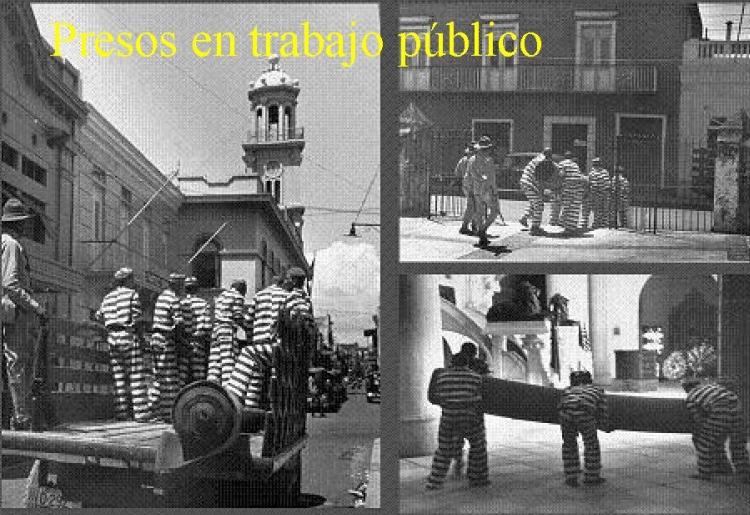
There were many more scandals during Trujillo’s rule. He was involved in an assignation attempt on President Rómulo Betancourt of Venezuelan, which made the United States and other Latin Countries to pose economic sanctions on Dominican Republic. USA tried to make the Trujillo regime volatile by ending diplomatic ties and creating severe sanctions.
Trujillo ordered the murder of the Mirabal Sisters who were political activists and revolutionaries. The sisters were involved with a group trying to overthrow the government. The ladies were driven home after visiting their husbands in prison. They were stopped and led into a sugar cane field. Here they were beaten and strangled to death.
Trujillo was also entangled in another famous scandal regarding the disappearance of Jesús de Galíndez Suárez while working for the government as a CIA agent. Galíndez went to the USA and wrote his thesis “The Trujillo Era: A Case Study of Hispano-American Dictatorship” / “La era de Trujillo: un estudio casuístico de dictadura hispanoamericana”. This thesis gave many astonishing and exposing histories on the way the dictatorship worked. Galíndez was kidnapped in New York a few days before the book was published. He was never heard from again. It is said that he was taken to the Dominican Republic to be tortured and executed.
Here are links to the story of CIA Agent Jesús de Galíndez.
*History in English (wikipedia) – Jesús de Galíndez.
*La trágica historia de Jesús Galíndez in Spanish.
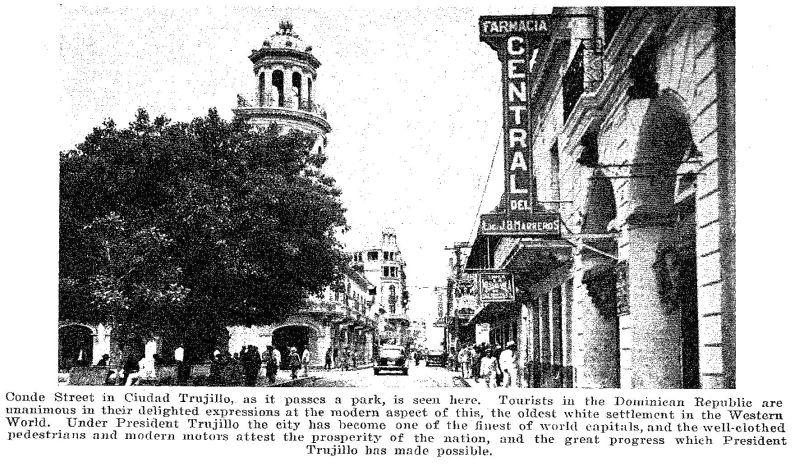
Trujillo did do some good for the country. The quality of life in general improved for the average Dominican. He completely paid off all the foreign debts, which was very substantial, and the currency stayed stable. There was still poverty but the economy grew. There was a new road system built and public works services expanded. The port facilities; airports and public buildings were constructed or improved. While the public education system grew illiteracy declined. He fortified the armies and fighting forces of the country. For all these reasons he was loved by the average Dominican. The United States proclaimed Trujillo the “First anti-Communist of America”, Trujillo encouraged diplomatic and economic ties with the U.S., but his policies caused discord among the other Latin American countries. He even, unbeknown to him, aided in the start of women’s rights. The Day of the Woman is celebrated on the anniversary of the murder of the Mirabal sisters.
In 1960 during the term of President Dwight Eisenhower, all the members of the Organization of American States (O.A.S.) agreed to break diplomatic relations with the Dominican Republic. Support of the O.A.S. was lost until Trujillo stopped being a threat. The Dominican Republic was cut off.
Trujillos Murder
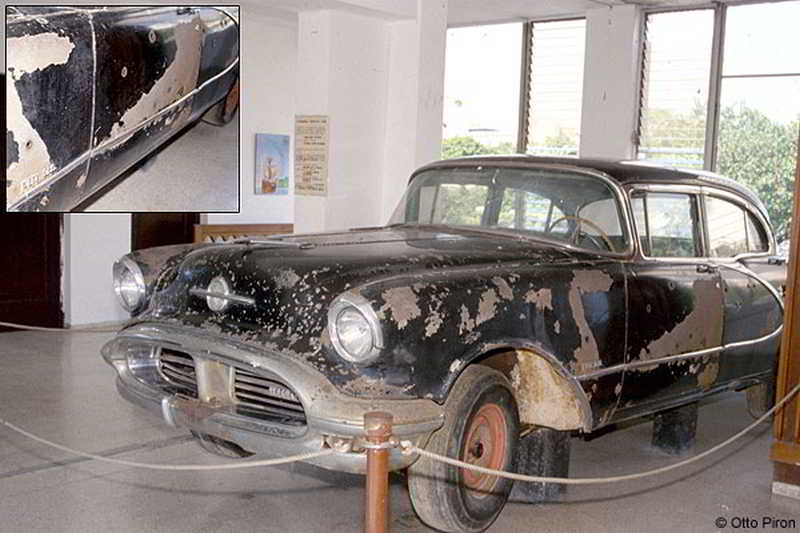
Trujillo was murdered by his own armed forces (Antonio de la Maza, Salvador Estrella Sahdalá, Lieutenant Amado García Guerrero, and General Antonio Imbert Barrera) on May 30, 1961 when he was 71 years old. He had just left the home of Doña Angelita Trujillo, located on Ave. Maximum Gomez. He was said to have been there for possibly ten minutes. Then, continuing on to the Bar Restaurante El Pony, he was shot. This ended the “Era of Trujillo”. The “goat” and his 31-year reign ended.
There is suspicion that the CIA of the USA provided the weapons for the assassins hoping to form a fresh, less reactionary government. They feared what happened in Cuba would happen in Dominican Republic and felt it was up to them to take control of another government and stop it before it happened.
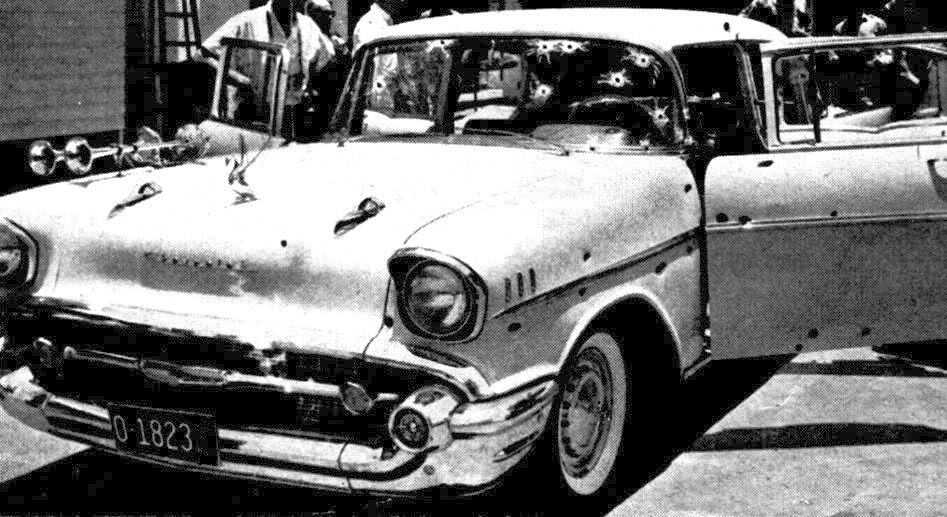
The oldest son of Trujillo, Rafael Leónidas Trujillo, Jr., took over after his fathers’ death and headed the country for five months. Ramfis Trujillo, as he was known, went into exile after his term ended and became an international socialite. He died from injuries sustained in an automobile accident.
Rafael Leonidas Trujillo Molina is buried in Paris in the Cimetière du Père Lachaise. Many of his friends and family went into exile to Canada, France, and Spain. He died one of the richest men in the world.
The Memorial Museum of Dominican Resistance / El Museo Memorial de la Resistencia Dominicana opened May 2011. Here is a collection of more than 160,000 files, photographs, films, objects and books belonging to those who staged the resistance to the dictatorship of Rafael Leonidas Trujillo.
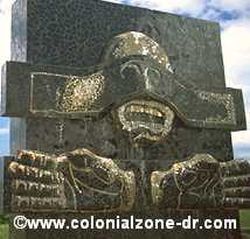
Did you know? – Some interesting facts
*Despues de Trujillo / After Trujillo is a must-see documentary if you want to learn more about the recent history of the Dominican Republic and understand how the past affects the country in the present day. The film finished in November 2016 and presented to the public. More information about Despues de Trujillo / After Trujillo on the Colonial Zone News Blog. At the bottom of the page are links to view the film in English and Spanish.
*Trujillo had 3 wives. He married Aminta Ledesma, a nice hometown girl from San Cristóbal on August 13, 1913. They had two daughters (one died early). They divorced in 1925. Then Trujillo married Bienvenida Ricardo on March 30, 1927 and divorced in 1935. Trujillo and María de los Angeles Martínez Alba, who he had an affair with, got married after his divorce from Aminta Ledesma in 1935. He had a daughter with Bienvenida one year after their divorce. Trujillo had three children with María Martínez. In 1937 Trujillo met Lina Lovatón Pittaluga and had two children with her.
*There is much controversy happening in the Dominican Republic at this time (2008) on the 47-year anniversary of his death. There was talk of trying to return the remains of Trujillo to DR and place his body along with the national heroes in the Panteón Nacional. Most of the people are strongly opposed to this idea.
*Trujillo was such a baseball lover he invited many black players from the US where they could not play because the teams were segregated. Leroy Robert “Satchel” Paige, a Negro League player, went to the Caribbean and Latin America, where the teams were all integrated. He pitched for a team organized by Trujillo. He was trying to gain popularity so he created the “Ciudad Trujillo Team.” He paid Paige $30,000 for winning the Dominican championship. Paige fled the Dominican Republic with his teammates directly after being paid for fear of reprisals by Trujillo’s enemies.
*Zsa Zsa Gabor, David Selznik, Robert Mitchum, Rhonda Fleming, Shirley MacLaine, Maureen O’Hara, Jimmy Stewart, Robert Taylor, Natalie Wood, Joan Collins, were among the many famous friends of the Trujillo family.
The web site The Glamour Girls has some interesting information about Ramfis Trujillo his timeline and his life with the stars.
Ramfis Trujillo had a very hot romance going on with Kim Novak.
Another friend Porfirio Rubirosa, had an interesting life.
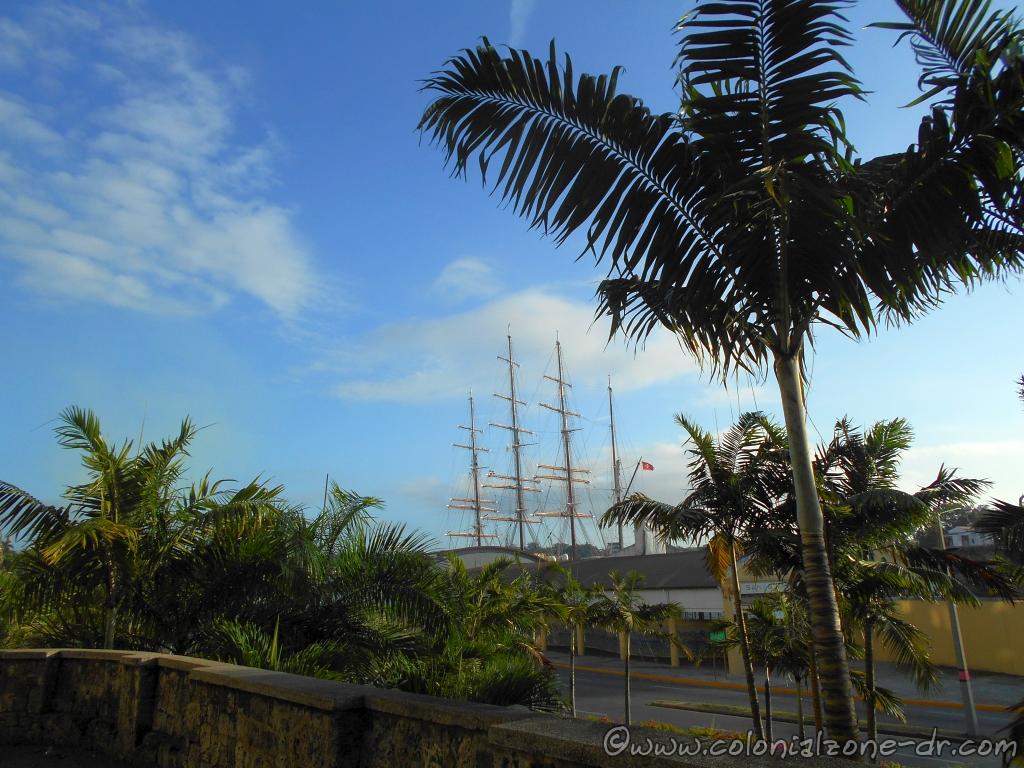
*Angelita, Trujillos yacht, was the world’s largest, most luxurious and most expensive private yacht of the time. (1957). History of the yacht.
*There are some pictures of Trujillo and his yachts in the Old Pictures of Dominican Republic slide show.
*The very interesting story of General Imbert interviewed. He is the man who shot the final bullet that killed Trujillo.
*I have posted some interesting documents you can download or read online located on the Dominican News Blog. President Trujillo: His Work and the Dominican Republic 1936 and the video Interview with General Rafael Trujillo 1961.
*Becoming The Butterflies “The Political Participation of the Mirabal Sisters” This is the account of Minerva Mirabal who was the first of the sisters to become involved in the underground movements to overthrow the government.
*United States Government correspondence with the Dominican Republic Government from 1961 to 1963. Dominican Republic: Security, February 1961-September 1963 https://www.jfklibrary.org/asset-viewer/archives/JFKPOF/115a/JFKPOF-115a-008

TRUJILLO: El Poder del Jefe II / The Power of the Chief (General, Boss)
This documentary shows the important political and social events that occurred in the Dominican Republic between 1938-1952. Included: The invasions of Cayo Confites and Luperón, the PSP, the Juventud Democrática, the sugar industry strike of 1946, the different conspiracies, as well as Trujillo´s relations with the United States before the beginning of the “Cold War.”
To view the other movies of the series on YouTube
TRUJILLO: El Poder del Jefe
TRUJILLO: El Poder del Jefe III.
La Violencia del Poder / The Violence of the Chief.
The movie The Feast of the Goat / La Fiesta del Chivo was out in theaters as of 4/2006.
Book of Trujillos Time
The book about the reign of Trujillo The Feast of the Goats – English(at Amazon)
The story about The Mirabal Sisters, Patria, Minerva, and Maria Teresa, is called In the Time of the Butterflies – English (at Amazon). It is excellent reading and gives much insight into the turbulent and interesting past of the Dominican Republic.





























